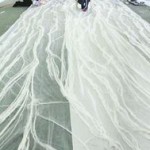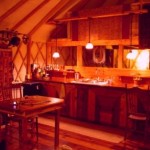Coming in March…an “art yurt” at the Smithsonian’s Cooper-Hewitt National Design Museum!
The Cooper-Hewitt exhibit Fashioning Felt, which runs from March 6 through Sept. 7, 2009, will feature a yurt installation by hand-felter Janice Arnold. Arnold (photo at right) will create a palace yurt, inspired by “the traditional dwelling of the tribal leader,” in the museum’s conservatory. The yurt will have a ceremonial entrance; the surrounding glass walls and ceiling of the conservatory will be draped in a soft, felted material of Arnold’s creation.
The Fashioning Felt exhibit provides a comprehensive overview of the uses of felt, with more than 70 works covering themes from historic examples and handmade felt innovations to contemporary industrial uses in fashion, architecture, product design and home furnishings.
The Cooper-Hewitt, National Design Museum is located on Museum Mile at the corner of 91st Street and Fifth Avenue in New York City (2 East 91st Street).
Plans are being made for the exhibit to travel to various locations after the run in at the Cooper-Hewitt.
Todd and Monica have a 30′ fabric yurt, but unfortunately they purchased it a couple of years ago from a company that advertises cheap yurts. There were so many problems with their yurt when it arrived (six months late) that it took them an additional six months to put it up. The good side, they said, is that they now know enough about yurts to build their own.
The most amazing thing about Todd and Monica’s yurt is the insulation. In addition to a layer of the usual Reflectix bubble wrap/foil insulation, Monica added a complete inside layer of real felt. The felt, imported from India, came in 7′ rolls. Monica hand stitched the wall sections, with cutouts for the windows, and had a friend machine-stitch 6 large pie-shaped wedges to go on top of the rafters.
The Reflectix layer, which is sandwiched between the felt and the outer covering of the yurt, functions as a
vapor barrier as well as providing additional insulation (and reflecting out the sun’s heat in the summer). Monica pointed out the importance of keeping the felt dry, as it can easily mold or rot if it gets wet.


